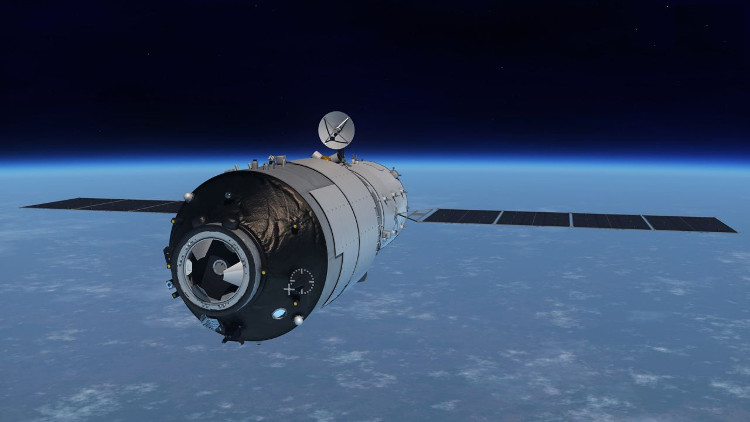Overview of China's Thien Cung 1 Space Station
Thien Cung 1 space station is the first space station of the People's Republic of China, which is expected to be the basis for testing the development of larger space stations.
Thien Cung 1 was launched by a Truong Chinh 2FT1 rocket, on September 29, 2011. This is part of the Thien Cung space station program , also known as Project 921-2 , which aims to build a large and semi-permanent space station in orbit by 2020.

Thien Cung 1 space station is predicted to fall to Earth this year.
Thien Cung 1 is a "space experiment module" weighing 8.5 tons (19,000 lb), capable of assembling with manned and self-propelled spacecraft. The Than Chau 8, Than Chau 9 and Than Chau 10 spacecraft are expected to pair with Thien Cung one of two years of operation of the station.
Thien Cung 1 is equipped with fitness equipment and two bedrooms. The inside walls of the module are painted in two colors, one for the ground and the other for the sky. This will help astronauts on future space stations keep the orientation in a weightless environment.
This space station provides a targeted module for cosmopolitan experiments, initially building up a space experiment that operates on an orbit for a long time and has people for a short time, to gain experience for the research of manufacturing space stations, conducting scientific experiments, experimenting with medicine and experimenting with space technology.
In 2016, China lost control of the station and is expected to soon return to Earth in 2018. The European Space Agency and 13 other agencies around the world are closely monitoring Heavenly Palace 1 to make accurately forecast the location of this station falling to Earth.
- Thien Cung 2 space station re-enters the atmosphere, being 'controlledly destroyed'
- The Chinese space station will fall to Earth in the next 24 hours
- Places of China's 8.5-ton space station could fall
- How to observe the 8.5-ton space station is falling indefinitely to Earth
- China's space station is about to plunge to Earth
- The second Chinese space station may be about to fall to Earth
- China will open the space station for foreign countries
- The god ship 10 connected Thien Cung-1
- China's Thien Cung 2 Station is ready to fly into space
- China announced the replacement model of ISS space station
- The Chinese space station can fall freely to Earth
- China is preparing to launch Thien Cung 2 in 2016
 Norway built the world's tallest wooden tower
Norway built the world's tallest wooden tower Kremlin
Kremlin Ashurbanipal: The oldest royal library in the world
Ashurbanipal: The oldest royal library in the world Decoding the thousand-year construction of Qin Shihuang shocked the world
Decoding the thousand-year construction of Qin Shihuang shocked the world